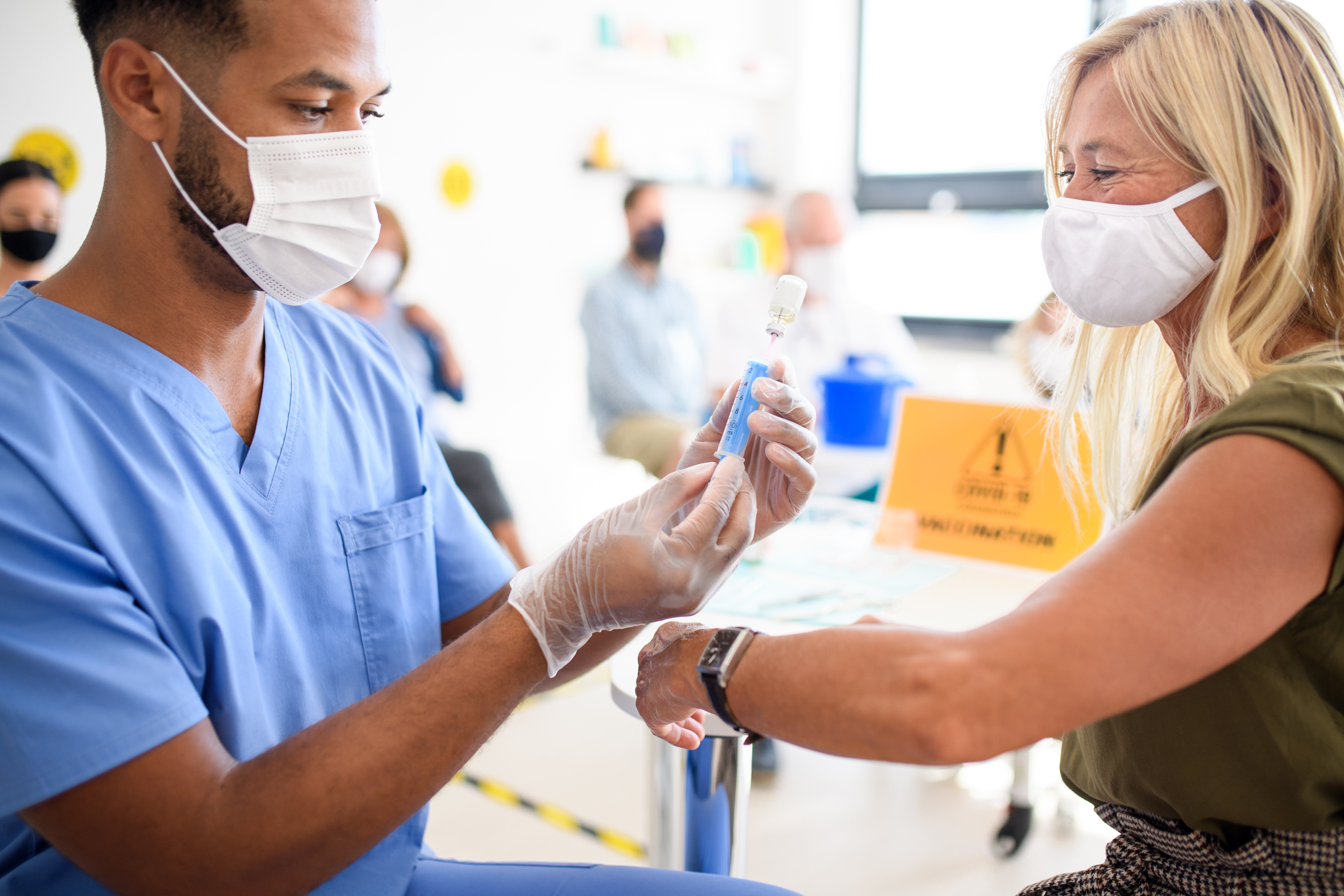Qsource Helps Nursing Home Address Staff COVID-19 Vaccine Hesitancy to Increase Resident Booster Rates
A nursing home in a Health Professional Shortage Area where one quarter of its residents are eligible for both Medicare and Medicaid (dual eligible) and 30 percent are racial or ethnic minorities, was referred to Qsource in February 2022 for assistance with improving its resident COVID-19 booster rate. The nursing home demonstrated a 52.9 percent increase in resident booster rates from when the facility was first referred to Qsource, a Centers for Medicare & Medicaid Services (CMS) Quality Innovation Network-Quality Improvement Organization (QIN-QIO), and the last report to the National Healthcare Safety Network (NHSN) database in June 2022.
The nursing home initially faced challenges vaccinating its staff due to concerns about the vaccine’s safety and efficacy. At the time of the referral, the facility had a staff vaccination rate of 50 percent and a booster rate of 18.6 percent. Much of the hesitancy stemmed from the vaccine’s emergency approval and concerns about the unknown long-term effects. The nursing home also is in an area with a large African American population that was concerned the vaccine might affect them differently than the Caucasian population. To prevent staff from contracting and spreading the virus to residents, and to assure residents and their families that the vaccine is safe and effective, the facility chose to first focus on increasing staff vaccination and booster rates.
 Leveraging State-based Partnerships to Address Vaccine Hesitancy
Leveraging State-based Partnerships to Address Vaccine Hesitancy
As part of its approach to addressing vaccine hesitancy in this and other nursing homes, Qsource partnered with the state department of health and a long-term care trade association to offer a weekly webinar and office hours series. Each session was facilitated by the trade association with Qsource and the department of health as speakers. Topics included the latest Centers for Disease Control and Prevention (CDC) guidance, vaccine safety and efficacy, accessing mobile vaccine clinics, infection prevention tactics, NHSN reporting, state reporting of COVID data and updates to state surveys. Following each 20-30-minute presentation, a Q&A session allowed participants to ask questions, network and share best practices. The nursing home participated in all sessions which, on average, included more than 260 nursing homes. In the last couple of weeks, an additional 11 nursing homes have joined the series for the first time.
Providing Trusted Vaccine Information
Qsource also provided educational resources from the CDC, including Myths and Facts about COVID-19 Vaccines, Safety of COVID-19 Vaccines and Developing COVID-19 Vaccines to address concerns about how quickly the vaccine was developed. This education, coupled with support from the nursing home’s corporate staff, one-on-one staff education provided by the facility’s infection preventionist and a vaccine mandate, led to significant increases in staff vaccination and booster rates. Currently, 73.5% of staff are vaccinated and 36.1% are vaccinated and boosted.
Using Successful Staff Vaccine Education Strategies with Residents and Families
As the nursing home began to see its staff COVID-19 vaccine and booster rates increase, Qsource helped the facility address its resident COVID-19 booster rate. In many cases, the hesitancy about the vaccine came not from the residents, but from their families. To address these concerns, Qsource recommended the facility apply some of the same strategies it used to address staff hesitancy. This included offering educational materials from the CDC and having one-on-one conversations with family members. Qsource also recommended the facility incorporate a five-minute education session around vaccines and boosters during monthly resident council meetings.
All nursing homes in the state served by Qsource that were referred to the QIN-QIO for assistance between January 9 and June 26, 2022, saw a 17.3 percent net increase in resident vaccination/booster rates as compared to nursing homes in the state that were not referred to the QIN-QIO for assistance. In addition, the percentage of fully vaccinated and boosted residents in nursing homes in the state that were referred to the QIN-QIO for assistance, increased by 27 percent, compared to fully vaccinated and boosted residents in nursing homes not referred to the QIN-QIO, which increased by only seven percent.
Qsource Regional Nursing Home Resident COVID-19 Vaccination/Booster Rates Including Referrals
from January 9 through June 26, 2022.
The graph compares vaccination rates of CMS-referred facilities (orange) with never-referred facilities (blue) and only includes referrals made between January 9 and June 26, 2022. Never-referred facilities did not meet initial criteria for booster referral because CMS focused on facilities with significantly lower rates.
This material was prepared by The Bizzell Group (Bizzell), the Data Validation and Administrative (DVA) contractor, under contract with the Centers for Medicare & Medicaid Services (CMS), an agency of the U.S. Department of Health and Human Services (HHS). Views expressed in this material do not necessarily reflect the official views or policy of CMS or HHS, and any reference to a specific product or entity herein does not constitute endorsement of that product or entity by CMS or HHS. 12SOW/Bizzell/DVA-1121-07/18/2023



